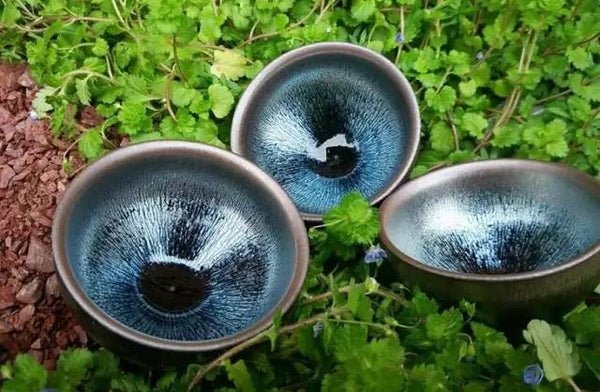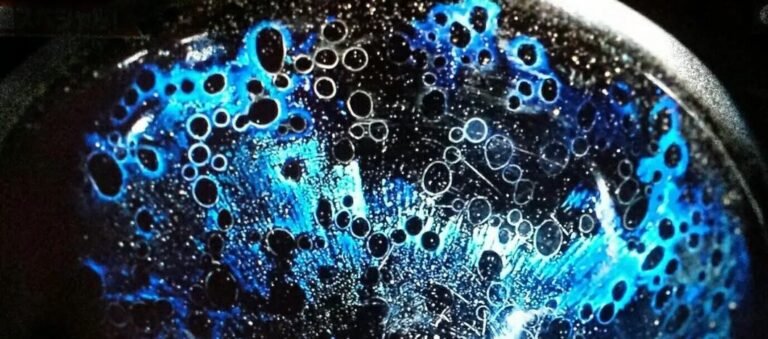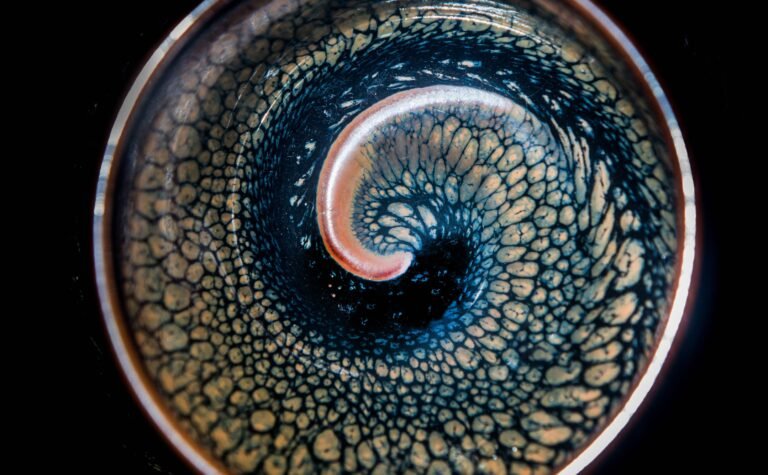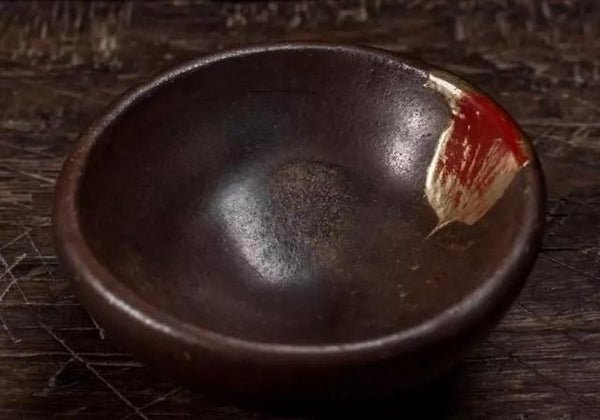A Practical Guide to Choosing Jianzhan: From Glaze Color to Artisan Selection
To discuss Jianzhan, the first prerequisite is understanding what truly qualifies as Jianzhan—and what does not. This article avoids fixating on price to prevent offending anyone, nor does it make empty judgments about the quality of artisans’ works; good or bad, you’ll know it when you see the piece itself.
This article was born from a common scenario: every day, the author is asked by numerous friends about how to choose Jianzhan, along with many detailed questions. These questions often have no clear answers online, or the responses from different people vary drastically. Thus, the author shares suggestions based on personal experience (in fact, there is great confidence that this article will be highly practical). Additionally, the list of artisans mentioned in this article is compiled from recommendations by over 20 masters—individuals whose craftsmanship is widely recognized as representative in the industry.
Evaluating Glaze Color: Prioritize Personal Preference Over Blindly Following Standards
Glaze color is almost the primary criterion for selecting any porcelain, but the author refuses to claim “which glaze color is better.” Aesthetic tastes differ, so there is no universal answer to such comparisons. Yet, we often become overly fixated on judging “superiority” or “inferiority”—an attitude unfit for a mature Jianzhan collector. If you hold this mindset, here’s a reminder: the downside is that you will be too eager to find a “standard answer,” and whoever provides that answer may sway your judgment, even distort your preferences.
Below are practical tips to help you choose a glaze color you truly love:
1.1 Reject Blind Faith in Authority; Trust Your Own Taste
We’ve all heard the saying: “Jianzhan is at its best when its glaze is black or green, and its hare’s fur patterns are uniform and smooth.” However, this offers little practical guidance for choosing the type of hare’s fur you prefer. The reason is simple: this statement came from Emperor Huizong of the Song Dynasty, who had seen far more Jianzhan pieces—of far higher quality—than any of us ever will. Therefore, do not blindly trust others’ “conclusions.” You must have full confidence in your own preferences: it is your taste that makes collecting Jianzhan enjoyable, and others’ preferences have nothing to do with you.
Hare’s fur patterns come in various types, including yellow, silver, blue, red, and gold. Most artisans primarily produce Jianzhan with yellow hare’s fur, while silver hare’s fur pieces are relatively rare. If you favor silver hare’s fur, pay close attention to the subtle differences in artisans’ works.
1.2 Oil Spot Patterns: Uniformity and Size Depend on Preference
- Uniformity: In most cases, the more uniform the oil spot patterns on a Jianzhan, the more visually appealing it is—but this is not an absolute rule. Many unique Jianzhan pieces have unevenly distributed oil spots; their scattered, layered patterns create a distinct aesthetic charm, making these “non-uniform oil spot” pieces well worth considering.
- Size: The size of oil spot patterns is linked to firing temperature, kiln atmosphere, and glaze formula—with temperature having the greatest impact. Higher temperatures mean larger areas where crystals attach to the black glaze, and oil spots are more likely to flow and cluster. However, “larger oil spots” do not equal “higher firing difficulty.” When choosing a Jianzhan, there’s no need to debate “which size is better”: whether you prefer small, delicate spots resembling a starry sky or large, patchy ones, the choice depends entirely on your aesthetic.
1.3 Glaze Color Selection: Avoid Deliberately Chasing “Rarity”
Currently, there are dozens of glaze colors available on the market. The mainstream options are blue and silver, with specialty colors like gold, yellow, red, green, and rainbow also available. It is advisable not to deliberately pursue “rare colors”: some niche glaze colors may have underdeveloped firing techniques, leading to issues like easy glaze peeling or poor stability—making them less durable than mainstream options. Moreover, “rarity” does not equal “beauty”; the best choice is the one that aligns with your own taste.
1.4 Crystalline Texture: Don’t Overcomplicate “Quality Judgments”
“Crystalline texture” is a relatively vague concept. To explain it more simply, we can use the term “vitrification effect” as a substitute. Generally speaking, the stronger the reducing atmosphere in the kiln, the weaker the vitrification effect, and the higher the activity of the crystals. However, this does not mean “strong vitrification = good texture” or “high crystal activity = poor texture.” There is no universal standard for judging the quality of crystalline texture; overthinking it will only make your choice harder. Instead, focus on intuitive feelings: Is the glaze surface smooth? Are there any messy blemishes?
Assessing Shape: Balance Practicality and Aesthetics
Jianzhan shapes can be divided into two categories based on size: practical wares (with a diameter of 6–12 cm) and decorative wares (with a diameter of over 12 cm). Practical wares are the mainstream for daily use and entry-level collections, with three common shapes:
- Straight-mouthed Jianzhan: The mouth of the cup is perpendicular to the body, featuring clean, neat lines and a stable grip. Ideal for daily tea drinking, it clearly showcases the coordination between the tea soup and the glaze color.
- Flared-mouthed Jianzhan: The mouth slightly flares outward, creating a spacious, elegant shape that dissipates heat quickly. Suitable for brewing lightly fermented teas like white tea or green tea, its flared design also makes it easier to observe the details of the glaze patterns.
- Contracting-mouthed Jianzhan: The mouth slightly curves inward, with a deeper belly that retains heat well. Perfect for brewing heavily fermented teas like Pu’er or black tea, its shape exudes a restrained elegance, balancing ornamental value and practicality.
In addition, there are specialty shapes on the market, such as the “Yulan Cup” (Magnolia Cup), which incorporates subtle improvements on traditional designs. You can choose based on your preference for “shape lines”—there’s no need to limit yourself to mainstream styles.
Key Considerations: Misconceptions About Iron Clay Identification and Artisan Selection
3.1 Iron Clay Identification: Don’t Rely on “Looking at the Base” or “Magnet Tests”
All Jianzhan pieces made by local artisans in Jianyang use iron clay. The reason is simple: artisans source their clay locally—there is no need to dig clay from other regions. The most prominent feature of local clay is its high iron content; this is an undisputed fact in the industry.
However, there are two common misconceptions about “identifying iron clay” that you should avoid:
- Misconception 1: Judging by the base color. Using the base color to determine if a Jianzhan uses iron clay is inaccurate. Reduction firing and oxidation firing produce different base colors. The common “gray base” myth exists because most oil spot Jianzhan on the market are made using reduction firing, which gives the base a gray hue. Under oxidation firing or weak reduction firing, the base may appear yellow, brown, or other colors—so a “non-gray base” does not mean the piece is “not made of iron clay.”
- Misconception 2: Using a magnet test. This is the most intuitive but least accurate method. The thickness of the body, the thickness of the glaze, the magnetic strength, and the size of the magnet can all affect the test results. For example, a Jianzhan with a thick glaze may have weak magnetic attraction due to the glaze barrier, but its body is still made of iron clay. Conversely, a non-iron clay Jianzhan mixed with a small amount of iron may still be attracted to a magnet. Thus, “magnet attraction” cannot be used as a basis for identifying iron clay.
3.2 Artisan Selection: Don’t Fixate on Fame, and Don’t Overlook Newcomers
- You can reference fame, but don’t blindly follow it. Generally speaking, more renowned artisans produce more reliable works. An artisan’s reputation is built on market recognition of their pieces and word-of-mouth spread—so they tend to be stricter with craftsmanship precision, product packaging, and quality control. However, there’s no need to become overly obsessed with “fame”: the Jianzhan industry has a relatively short revival period, and it has only been popular for the past 3–4 years. Most artisans’ skill levels are not drastically different (it usually takes at least 20 years for significant skill gaps to emerge in a profession). Overprioritizing fame may lead you to overpay for “fame premiums” or even buy counterfeit pieces.
- Don’t overlook works by new artisans just because they’re not famous yet. Currently, the number of Jianzhan artisans is growing at a rate of nearly 100 people per year. Many new artisans create high-quality pieces at relatively affordable prices—offering excellent value for money.
Editor’s Suggestions
Do not compare prices, especially if you are a beginner. This advice may spark disagreement, but let’s elaborate:
- For beginners, the chance of finding a “bargain” without being scammed is almost non-existent—so don’t count on it.
- Each artisan has a relatively independent pricing system. Comparing prices between different artisans does not necessarily reveal “problems” (e.g., a higher price does not always mean better quality, and a lower price does not always mean poor quality).
- Even pieces by the same artisan may have different prices, depending on quality and target audience. In this case, you can choose pieces with good cost-effectiveness, but be cautious: low prices may also lead you to buy low-quality products.
Therefore, when making a purchase, you should consider multiple factors—including glaze color, shape, craftsmanship, and your own needs—rather than focusing solely on price.



